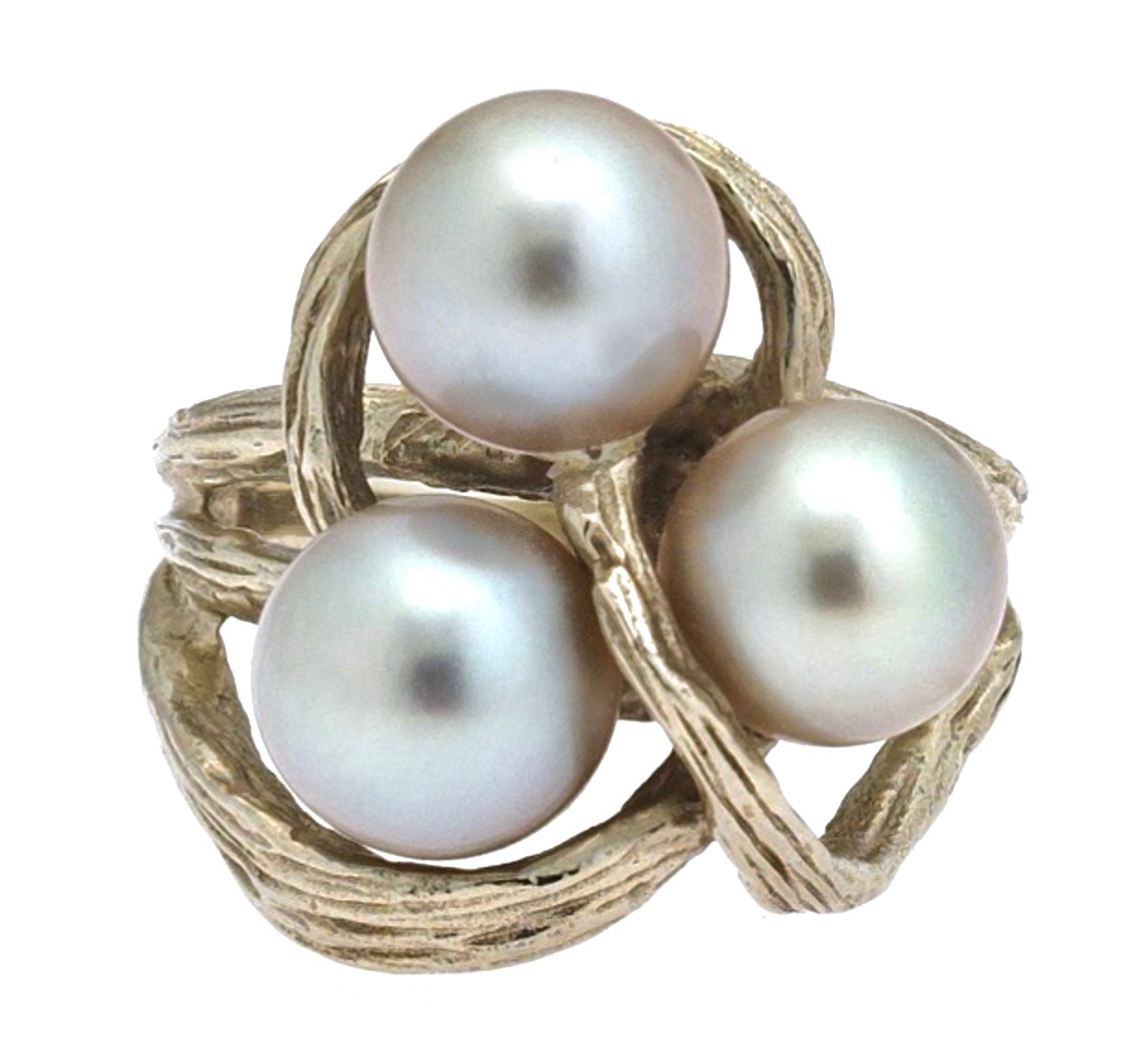

Title: Ladies Vintage Organic Designer White Gold and Pearl Ring
Shipping: $29.00
Artist: N/A
Period: Contemporary
History: Art
Origin: North America > United States
Condition: Excellent
Item Date: N/A
Item ID: 127
Ladies' Gold and Pearl Free-Form Ring Ring size 5.5 14k white gold openwork organic design free-form ring with a textured finish, set with three silver pearls, measuring 7 mm each; marked on the inside; overall weight 6.5 gm. Condition: Very good. The finest quality of natural pearls has been highly valued as gemstones and objects of beauty for many centuries. Because of this, the pearl has become a metaphor for something rare, fine, admirable and valuable. Fine quality natural pearls are very rare jewels. Their values are determined similarly to those of other precious gems, according to size, shape, color, quality of surface, orient, and luster. Single natural pearls are often sold as collectors' items or set as centerpieces in unique jewelry. Very few matched strands of natural pearls exist, and those that do often sell for hundreds of thousands of dollars. (In 1917, jeweler Pierre Cartier purchased the Fifth Avenue mansion that is now the New York Cartier store in exchange for a matched double strand of natural pearls Cartier had been collecting for years; at the time, it was valued at US$1 million.)
Natural pearls are nearly 100% calcium carbonate and conchiolin. It is thought that natural pearls form under a set of accidental conditions when a microscopic intruder or parasite enters a bivalve mollusk and settles inside the shell. The mollusk, irritated by the intruder, forms a pearl sac of external mantle tissue cells and secretes the calcium carbonate and conchiolin to cover the irritant. This secretion process is repeated many times, thus producing a pearl. Natural pearls come in many shapes, with perfectly round ones being comparatively rare.
Link: https://en.wikipedia.org/wiki/Pearl
The most valuable pearls occur spontaneously in the wild, but are extremely rare. These wild pearls are referred to as natural pearls. Cultured or farmed pearls from pearl oysters and freshwater mussels make up the majority of those currently sold.
Pearls have been harvested and cultivated primarily for use in jewelry, but in the past were also used to adorn clothing. They have also been crushed and used in cosmetics, medicines and paint formulations.
Whether wild or cultured, gem–quality pearls are almost always nacreous and iridescent, like the interior of the shell that produces them.